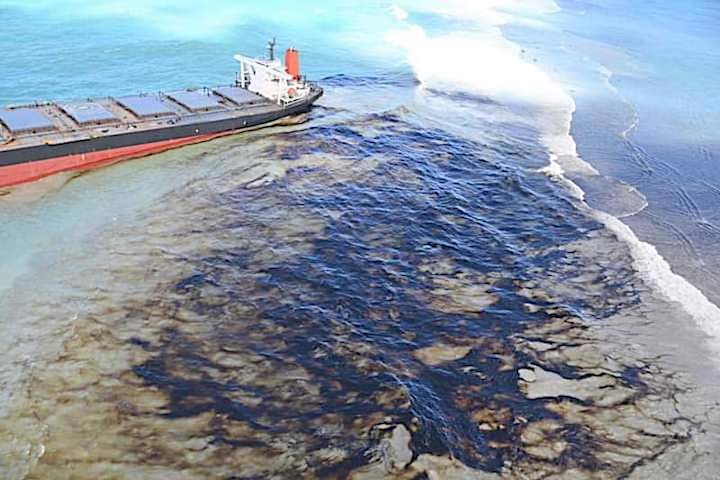Why so much world trade passes Mauritius’s pristine beaches
The bulk carrier Wakashio was 11 days into a month-long voyage to Brazil when it hit a reef off Mauritius causing it to spill fuel into the island’s crystal clear waters, endangering baby turtles and unique plants in a nearby nature reserve. Given the vastness of the Indian ocean, why was the vessel there in the first place?

Part of the reason is simple geography. Mauritius and the nearby island of Reunion lie on the shortest straight-line route between the Strait of Malacca, which links the ports of Asia to the Indian Ocean, and the southern tip of Africa. That also makes it the route of choice for shipping between the huge markets and manufacturing centers of China, Japan, South Korea and the rest of Asia in the east, and the resource-rich regions of West Africa and Latin America, or the markets of Europe and North America, in the west.
In short, if a freighter is sailing between the eastern and western hemispheres, there’s a good chance that it will get somewhere close to the islands. The main alternative route is to navigate Egypt’s Suez Canal.
In the past 24 hours, more than 800 ships—from giant commodity carriers down to tiny freighters—sent position signals from the shipping lane that connects the southern tip of Madagascar to the northern tip of the Indonesian Island of Sumatra, vessel-tracking data observed by Bloomberg show. That compares with about 100 ships on a more southerly alternative route.
“Mauritius is bang on that route for all the ships coming out of Asia and heading into the Atlantic Basin going around the Cape of Good Hope,” said Richard Matthews, head of research at E.A. Gibson Shipbrokers Ltd. “They are just trying to find the shortest route.”
Just as in the 16th century, shipping routes today often tend to stick close to land. Satellite navigation systems may make it easier to pinpoint a ship in distress, but if that vessel is thousands of miles from the nearest shore, then getting specialized help to it in an emergency can take days.
Being closer to shore may allow ships to pick up internet signals, allowing crew members to contact family without needing to use expensive and limited satellite phones.
All that helps to explain why ships get within the vicinity of Mauritius. It doesn’t address why the carrier was in its precise location. That question, and many others, will now become a focal point as investigators figure out exactly what happened.
Similar Stories
CMA CGM PCS in Nicaragua & El Salvador
CMA CGM wishes to inform its customers of the following Port Congestion Surcharge (PCS):
View ArticleHow Trump’s re-election is set to reshape U.S. container trade dynamics / Container xChange
With Donald Trump’s return to the White House anticipated, the U.S. container trading industry faces a new landscape of both opportunity and complexity. As his administration seems almost certain, policy…
View Article
Hapag-Lloyd orders 24 new container ships
View Article
Strategic Marine secures repeat order with OEG renewables for state-of-the-art crew transfer vessel
View Article
WiseStella eases SIRE2 challenge for shipmanagers
View ArticleFreightos Weekly Update
Trump’s victory in the US presidential election yesterday may start impacting the ocean freight market even before his January inauguration.
View ArticleGet the most up-to-date trending news!
SubscribeIndustry updates and weekly newsletter direct to your inbox!





